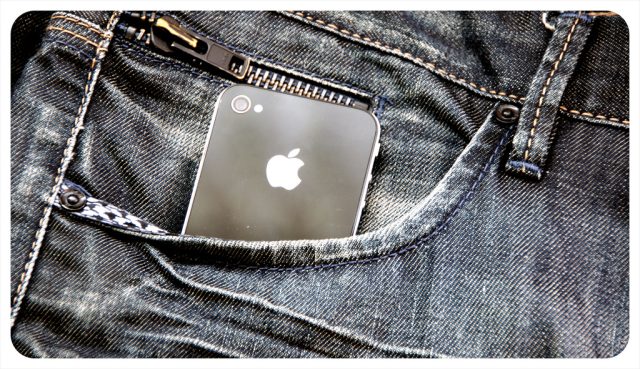
In a 4-3 decision, Massachusetts’ highest court ruled Friday that with a warrant, it's ok for police to search anywhere on a seized phone that may reasonably turn up evidence of the crime under investigation.
In the case of Commonwealth v. Dorelas, the Massachusetts Supreme Judicial Court (MSJC) found that because the Boston Police Department (BPD) had a warrant to search a criminal suspect’s seized iPhone, it could access his photos as well.
As the majority opinion found:
The case dates back to July 3, 2011, when several BPD officers responded to a shooting on Pierce Street in the Hyde Park neighborhood of Boston. When they arrived, they found a Glock .40 caliber in the street and a man, Michael Lerouge, who had sustained gunshot wounds in his back. Witnesses told the police that a man in a "green-colored shirt or jacket" had run down Pierce Street. They quickly apprehended Denis Dorelas, who was wearing a jacket that fit that description.The defendant contends, however, that the police had probable cause only to search his telephone call and text files, and not his photograph file. We disagree. Communications can come in many forms including photographic, which the defendant freely admits. So long as such evidence may reasonably be found in the file containing the defendant's photographs, that file may be searched.
After receiving a warrant to search Dorelas’ apartment, they found both a gun and his iPhone. BPD investigators then applied for and received a second warrant to search the iPhone. That warrant allowed authorities to search for a vast set of items, including text messages, e-mail messages, and photographs. Amongst other photographs found on the phone was a picture of Dorelas wearing the same green jacket and holding a gun.
In September 2011, Dorelas was charged with possession of a firearm without a license, among other related gun charges. On a direct appeal to the MSJC, Dorelas filed a motion to suppress the images found on his iPhone. He argued that searching photographs attached to text messages that were relevant to the investigation—but not searching all photographs—was appropriate.
Is searching a phone like searching a house?
In the majority opinion, the MSJC noted that searching a phone is not quite the same thing as searching a house. A 1982 Supreme Court decision found that a law enforcement officer need not specify a specific room or specific location within a house in a warrant application.
However, in the virtual world, it is not enough to simply permit a search to extend anywhere the targeted electronic objects possibly could be found, as data possibly could be found anywhere within an electronic device. Thus, what might have been an appropriate limitation in the physical world becomes a limitation without consequence in the virtual one.
Nevertheless, much like a home, such devices can still appropriately be searched when there is probable cause to believe they contain particularized evidence.
In the appeal to the MSJC, Dorelas’ attorneys noted that the BPD could have used a Universal Forensic Examination Device (commonly known as a Cellebrite) to distinguish between text messages and other photographs—as a way to ensure his privacy rights.
The MSJC did not find that this was required.
While it may be possible for a forensic examiner to retrieve some photographic evidence through searches of files other than the photograph file, that does not make such a retrieval method constitutionally required where such photographic evidence would also reasonably be found in the iPhone's photograph file.
In addition, the communications at issue may have occurred over an extended period of time leading up to the shooting, and where texts and their attachments may be overwritten by new data, the saved photographic attachment may only be found in the iPhone's photograph file.
Accordingly, in determining the nexus between the items sought and the place to be searched, it was reasonable here to infer that the targeted evidence might not exist exclusively in the text and call log folders.
In a dissent, MSJC Justice Barbara Lenk, writing for the minority, expressed her "concern about the future direction of our search and seizure law in a digital context."
Lenk, citing the recent unanimous Supreme Court decision, California v. Riley, disagreed with her colleagues in the majority:
We must not be taken in by the shape and size of a device that permits access to massive stores of information of different kinds. Where possible—recognizing that it not always is—it may be best to treat such a device more like a city than like a packing crate. Here, there was no impediment to limiting the search to certain types and categories of files stored in specific sections of the iPhone's data storage. Because there was no substantial basis for believing that the entire set of photograph files on the defendant's iPhone contained evidence related to the shooting, that portion of the iPhone should not have been included in the "place" to be searched.
The American Civil Liberties Union of Massachusetts, which filed an amicus brief in support of Dorelas, told the Boston Herald that the court could have been clearer to state law enforcement.
"Everyone agrees that cellphones hold a lot of information, and that the information needs to be protected," Jessie Rossman, an ACLU Massachusetts attorney, told the paper. "We need very clear standards for police officers who are issuing warrant applications."
reader comments
86